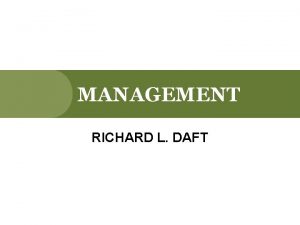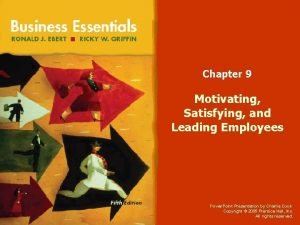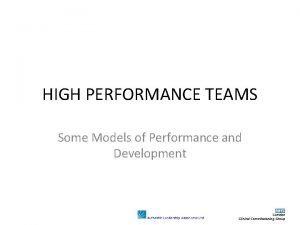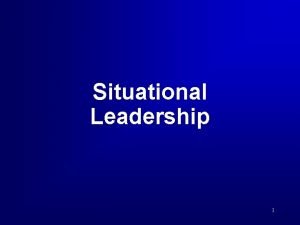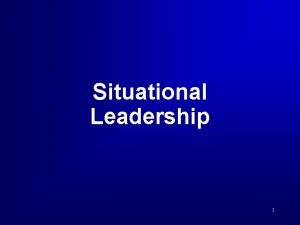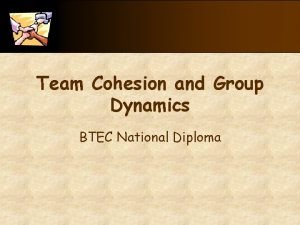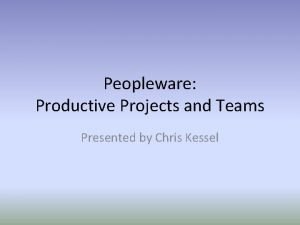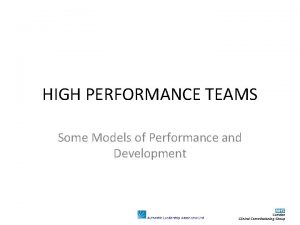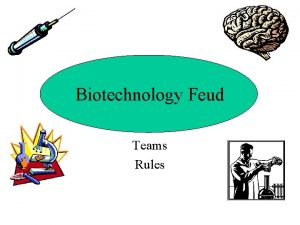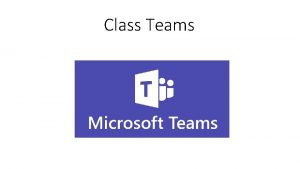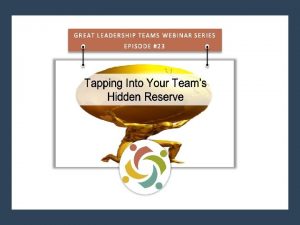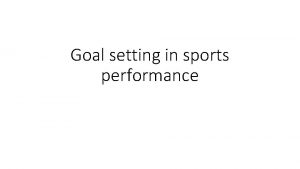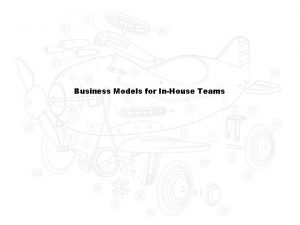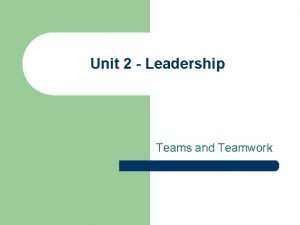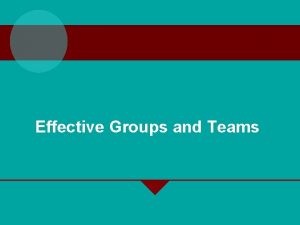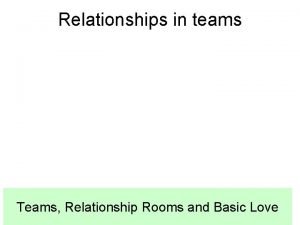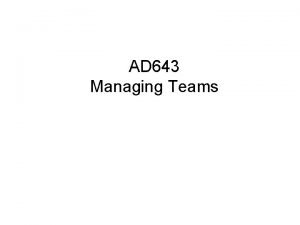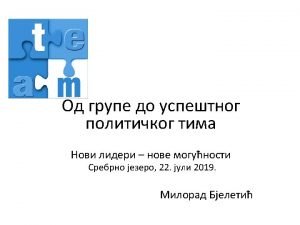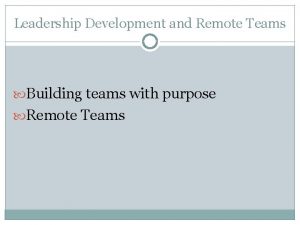HIGH PERFORMANCE TEAMS Some Models of Performance and


















- Slides: 18

HIGH PERFORMANCE TEAMS Some Models of Performance and Development

Your Role • • Who do you see as your sponsors ? Who do we see as your stakeholders? How often should you meet with them? What do they expect of you? What do you see as your key challenges? What could be improved?

The Values by which we work Camden Values Nolan Principles Honesty Integrity Courage Patient sighted Competency Transparency Collaboration Adherence to NHS founding principles Selflessness Integrity Objectivity Accountability Openness Honesty Leadership

What distinguishes teams from groups • According to Reilly and Jones (1974) Characteristics of a team : Members must • Have an agreement for working together • Be interdependent • Be committed to the idea that working together produces better results than working in isolation • Operate as a functioning unit within the larger organisation

Five stage process for team development • Tuckman ( 1965 and 1977) • • • Forming Storming Norming Performing Adjourning

Forming Be clear what the goal is and why. Who is the customer Relationships polite and non threatening People get to know each other within constraints of task • Assumptions based on job title • •

Storming • Move from agreeing the goal to discussing how • Storm is natural and may come through argument or silence • Not effective if people pretend to agree • Good to explore potential problems • People get to know each other as people not just in relation to job

Norming How • Roles and tasks are assigned • and where information is stored • problems are raised • ideas are shared • progress is reported • often and where team members hold reviews with the team leader • often and where teams formally review collectively

Performing • Personal relationships supporting the of the team • Good listening • High levels of trust and interdependency • Recognition of diversity • Differences are seen as learning opportunities not threats • Meeting are for learning not just information exchange

Adjourning • The importance is often underestimated • Need to say goodbye before team can ‘move on’

Team Performance Model : Seven Steps Drexler and Sibbert • • Orientation Trust building Goal clarification Commitment Implementation High performance Renewal

Orientation • When teams are forming everybody wonders WHY they are here. • What is their potential fit and whether others will accept them. • People need some sort of answer to continue

Trust building • Next people want to know who they will work with – their expectations , agendas and competencies, • sharing builds trust and a free exchange among team members

Goal clarification • The more concrete work of the team begins with …. • their expectations, agendas and competencies sharing builds trust and a free exchange among team members

Commitment • At some point discussion need to end and decisions need to be made about… • HOW resources time, staff all the bottom line constraints – will be managed • Agree roles are key

Implementation • Teams turn the corner when they begin to sequence work and settle on WHO does WHAT WHEN AND WHERE in action. • Timing and scheduling dominate this stage

High Performance • When materials are mastered a team can begin to change the goals and flexibly respond to the environment. • The team can say WOW and surpass expectations

Renewal • • • Teams are dynamic. People get tired Members change People wonder WHY continue Its time to harvest learning and prepare for a new cycle of action
 What is the difference between models & semi modals
What is the difference between models & semi modals Contact forces
Contact forces Some may trust in horses
Some may trust in horses They say it only takes a little faith to move a mountain
They say it only takes a little faith to move a mountain They say sometimes you win some
They say sometimes you win some Ice cream is a countable or uncountable noun
Ice cream is a countable or uncountable noun Some say the world will end in fire some say in ice
Some say the world will end in fire some say in ice Some say the world will end in fire some say in ice
Some say the world will end in fire some say in ice Chapter 10 motivating employees
Chapter 10 motivating employees Motivating and satisfying employees and teams
Motivating and satisfying employees and teams Is the individual internal process that energizes directs
Is the individual internal process that energizes directs Motivating and satisfying employees and teams
Motivating and satisfying employees and teams Motivating and satisfying employees and teams
Motivating and satisfying employees and teams The sun is high put on some sunblock
The sun is high put on some sunblock Team performance models
Team performance models Directive supportive leadership
Directive supportive leadership High directive and high supportive behavior
High directive and high supportive behavior Interactive and coactive teams
Interactive and coactive teams Peopleware: productive projects and teams
Peopleware: productive projects and teams









